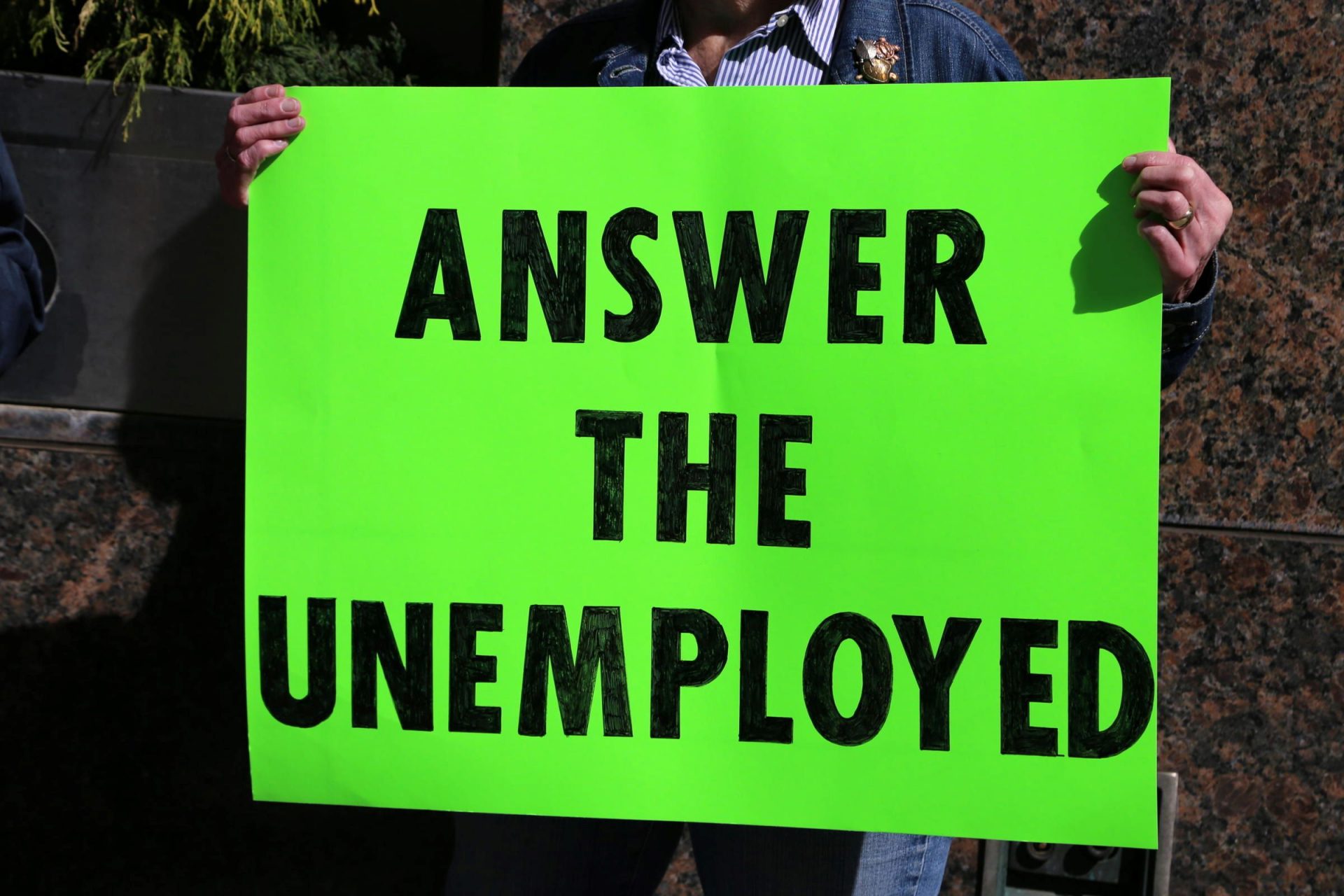
John Good, of Richland Township, stands at his current home on Wednesday, March 24, 2021.
Katie Blackley / WESA

John Good, of Richland Township, stands at his current home on Wednesday, March 24, 2021.
Katie Blackley / WESA

Katie Blackley / WESA
John Good, of Richland Township, stands at his current home on Wednesday, March 24, 2021.
(Pittsburgh) — After a year of record high unemployment caused by the COVID-19 pandemic, many laid off workers say it remains close to impossible to reach the Pennsylvania Department of Labor and Industry and problems with unemployment benefits remain unresolved.
John Good, of Richland Township, is owed months of benefits – more than $20,000.
“I borrowed off everybody I could borrow,” said Good, 48. “I don’t know when work is going to come again, but I am broke and I’ve been broke, thank God for family and friends.”
He had to move in with family and almost lost his car.
“I’ve had no income for months. Zero income. And this has been a complete and total nightmare.”
Good, who normally works as a union boilermaker, has called the Department of Labor and Industry so many times he’s lost count.
“There were days where I put three, 400 calls in. Just keep hitting the redial button,” he said.
The few times he’s made it through on the phone, the person who answered was unable to help him. He was promised calls back from supervisors, but never received them.

Katie Blackley / WESA
A demonstrator holds a sign about unemployment compensation and the frustrating process many claimants have faced over the past year during a rally downtown on March 10, 2021.
Things have gotten so bad that laid-off workers and advocates held protests earlier this month in Pittsburgh and Philadelphia.
“It’s a doggone disaster. But the governor needs to mobilize all resources in the state to be able to fix this problem. And do it now,” said Barney Oursler of the Mon Valley Unemployed Committee, addressing the crowd in Pittsburgh.
On the same day as the protest, state officials pledged to hire up to 1,000 new workers to answer the phones and have them in place by June.
But many observers and advocates say Pennsylvania’s problems in this area run too deep for a quick fix – a combination of years of underfunding and staff cuts, a complicated unemployment system, and the bad timing of the pandemic striking prior to a major IT modernization that had been in the works for more than a decade.
Officials at the Department of Labor and Industry have said they have responded to a crisis that is unprecedented in its magnitude. They point to statistics such as having paid out more than $38 billion in benefits to unemployed Pennsylvanians, as well as the fact that the number of unemployment customer service staff have doubled to about 1,700 people as of mid-March.
In the last year, the department has also stood up multiple new federal unemployment programs to provide pandemic relief, Acting Secretary Jennifer Berrier testified last month.
But it’s more than just the volume of out-of-work Pennsylvanians that slows the system down. Eligibility determinations are complex.
“Different laws dictate what steps must be taken to determine the eligibility of workers in various industries,” Shawn Domenico, an unemployment compensation claims examiner based in Allegheny County, testified last month at a state House committee hearing. “Claims from workers who may have been called back to work for a week and then been furloughed again require different steps to process than a worker who has simply been furloughed once. Employers may dispute claims and are entitled to their due process. Simply put, our ability to determine eligibility is usually the biggest driver of delays in getting payments out to people.”
More than 41,000 cases are pending resolution, according to Sarah DeSantis, spokeswoman for the state Department of Labor and Industry.
“These are claims that cannot be processed automatically by the system because they are more complex and require manual staff review,” she said, adding that this only represents about two percent of cases.
Department officials say the average hold time for callers was 43 minutes last week. But advocates say that’s only if someone manages to break through the constant busy signal.
Good is hopeful that he’ll be able to find work again within a few weeks, but he’s worried if the problem stretches on much longer, he will lose his phone or his car.
“Those are the most important things for me to go back to work, I got to get the phone calls. I have to have a vehicle … and I’m just hoping it doesn’t get that bad. I’m hoping this gets resolved way before that happens.”
The days of journalism’s one-way street of simply producing stories for the public have long been over. Now, it’s time to find better ways to interact with you and ensure we meet your high standards of what a credible media organization should be.